
In this digital age, information overload has made knowledge management increasingly important for organizations. While consolidating business knowledge still remains one of the most arduous challenges companies face, leveraging this knowledge for business growth is a goal that’s even more far-fetched.
For most organizations, regardless of their size, a Knowledge Management System (KMS) is the need of the hour.
Incorporating a knowledge management system can help you create a centralized repository of business information to streamline employee learning and collaboration and help customers resolve issues on their own.
While the benefits of knowledge management are many, the absence of it can lead to broken internal processes, poor customer support, and low productivity.
Let’s explore everything about the importance of a knowledge management system, its types, and how it can be created in this blog.
Let’s go.
What Is a Knowledge Management System?
A knowledge management system helps you capture, store, and share knowledge across all departments in your organization. The primary goal of a KMS is to bring all fragmented pieces of information together on a single platform where employees and customers can access it conveniently. It acts as a one-stop information center that fosters team collaboration and improves work efficiency.
A knowledge management system can help you cater to your employees as well as customers.
For example, a KMS for your employees can offer the following:
- Employee handbooks
- How-to articles and videos
- Subject matter expertise
- Latest company developments
- Company work processes
- Previous and new projects
- Company vision, mission, clients, and much more.
On the other hand, a KMS built for customers or your support team comprises:
- Product or service-related information
- Product features and how they work
- Video tutorials, how-to articles
- Safety precautions
- Troubleshooting tips and FAQs
- Subscription details, payment process, and much more.
Types of Knowledge Management Systems
A knowledge management system helps grow your business by providing employees and customers with seamless access to information. But the knowledge requirements of customers aren’t the same as employees. To effectively cater to both audiences, a KMS is divided into two parts:
Public or External KMS
A public knowledge management system focuses on your external audience, i.e., customers. It acts as a customer self-service portal comprising well-structured articles on your products or services. Customers can access this platform on the go to solve problems on their own.
Depending on your goals, you can have a public KMS in various formats – knowledge base, help center, FAQs, manuals, help sites, and many more.
For instance, if you want a simple help section that addresses common customer questions, an FAQ section is the right choice. But, if you want a comprehensive resource that covers products and services in detail – a knowledge base would fit the bill.
Private or Internal KMS
An internal or private KMS is the opposite of a public or external KMS. It is targeted towards your internal audience, i.e., employees. It works as a one-stop platform for your employees to get quick access to your company’s best practices, code of conduct, policies, and any other information they need. An internal KMS helps you in employee onboarding, cross-department collaboration, and knowledge sharing.
Some of the popular formats of an internal KMS include an internal knowledge base, private wiki, employee handbook, HR documentation, and training documentation, among others.

Objectives of a Knowledge Management System
A knowledge management system is important as it can help you boost your team’s productivity, encourage collaboration across departments, and much more. Here are some key objectives of adopting a KMS:
Prevent Information Silos
Information silos are one of the biggest blocks to company-wide knowledge access. You might have experienced this in your own business – important business information locked in years-old files or folders, with only a few people knowing their whereabouts.
Not just this, even department-specific information remains in the confines of a few teams without a proper system to share it with others.
This is where a KMS helps. It centralizes knowledge across departments so that employees at all levels can easily access critical business information. Employees can also use the KMS to share their insights and experiences with colleagues, which helps foster a learning-focused culture in your organization.
Boost Team Productivity
Productivity goes for a toss when employees have to waste hours digging through scattered documents to find the information they need.
A KMS guides employees with the why, how, and what of everything related to your business. The knowledge management tools stores all the information in a centralized repository and ensures that employees get what they need in a few clicks and are always headed in the right direction!
The easy accessibility of information boosts team productivity and allows employees to work without jumping through hoops to access the data they need. This eventually improves their performance and growth.
Control Knowledge Loss
What happens when key employees retire, resign, or are sacked from your organization?
As they leave, the enormous pool of knowledge accumulated over the years also leaves with them. And this is a huge loss for your organization. The expertise and knowledge employees gain while working in your company are an asset. If this knowledge is lost, it can hamper your internal processes significantly.
A knowledge management solution can prevent this from happening. It gives employees a platform where they can regularly share their institutional knowledge with colleagues across departments.
This way, the knowledge stays with you forever.
Improve Customer Satisfaction
Did you know that 56% of people around the globe have stopped doing business with a company due to poor customer support?
A knowledge management system benefits your customers as well. If you use the KMS as a customer-facing knowledge base, help center, or user manual, you make it available to your customers for self-service. A KMS provides customers with instant help whenever they encounter an issue with your products or services.
Besides, it also helps your support staff stay on top of product information and deliver timely help to customers across channels – chat, social media, calls, or emails.
Since customers can solve basic issues on their own, your support staff receives fewer tickets, and they have more time to focus on critical issues that require careful analysis.
Foster Innovation & Collaboration
A knowledge management system brings all your employees under a single roof, where they can work together on projects, give feedback, and solve problems with each other’s support.
You can assign specific roles to team members so that they can work collaboratively with minimum friction. Easy access to expert knowledge aids employees in performing their jobs effectively. They can leverage the insights shared by different teams to be more innovative with their approach to work.
How to Measure the Effectiveness of KMS?
To reap the benefits of a knowledge management system, you need to constantly check its effectiveness. Most knowledge management systems offer a reporting functionality with a set of essential metrics that help you monitor performance. To measure the effectiveness of your KMS, you can analyze the following metrics:
Contributions
Analyzing your workforce’s contributions is an excellent way to determine their engagement with the KMS. It helps you know which employees are actively contributing, what is the frequency of their posts, etc. This puts you in a better position to determine the contributions of your employees in growing your knowledge repository. You can also identify your top contributors and leverage them as role models for others.
If you notice that the number of contributions is less, you can show your employees examples of good contributions and inspire them to do better.
Interactions
Contributions are meaningful only when your employees interact with the posts. You can analyze interactions through comments, shares, and likes to determine the success of your contributions. The more interactions, the higher the engagement.
However, if interactions are low, you need to communicate the issue with your team and encourage them to share feedback, especially on articles that are not helpful. This way, you will always know what kind of information they need to work more effectively and what can be added for further improvement.
Broken Links
No one likes to see a “404 – Page Not Found” error, especially when they need some important information urgently. Such errors or broken links need to be worked on as they can hurt the employee and customer experience.
To improve usability and fix broken links, you must regularly audit and assess your content using a built-in or external reporting tool. It will show which links are causing hindrances in the knowledge flow so that you can work on them.
Search Activity
Keeping a close track of search activities gives you a peek into the most searched topics, popular and poorly rated articles, searches that show no results, and much more. You can analyze this information from time to time and leverage it to plan and deliver content effectively.
Response Time
A powerful knowledge management system must be fast and responsive.
A KMS that lags in speed can be frustrating for employees. This also impacts their productivity and performance. For your KMS to return quick and accurate results, you should optimize the content using relevant search terms and keep the quality on point.
The structure is another area you can work on to improve response time. Ensure that all your content is categorized logically and interlinked properly to provide a smooth search experience to users.
Platform Utilization
Analyzing the volume of users regularly accessing your knowledge management system can help determine its effectiveness. If a good chunk of your customers and employees are utilizing the platform, it means that they are finding it helpful.
If the volume of users is low, then you need to analyze the key performance metrics and find out what went wrong with your approach. You can also share feedback surveys with every article to get a clear idea about what areas need your immediate attention.
Top Features of a Knowledge Management System
Knowledge management systems are plentiful. The abundance of options makes the job of picking the right tool cumbersome. But being aware of the top features to look out for can help you in your search. Here are some knowledge management features to keep in mind when looking for a knowledge management system to meet your specific needs:
Centralized Collaboration
An ideal knowledge management system allows different individuals and teams to join forces and participate in the content-building process.
It has a user management system in place, wherein you can add new users and groups and allot them roles like writer, editor, administrator, or viewer — so they can work together in a shared space.
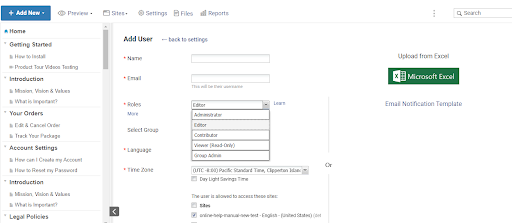
This collaborative system streamlines the content crafting process, as everyone knows what they are supposed to do. There are no clashes among users, and your business knowledge always stays updated and fresh for everyone to use.
Uninterrupted Search
A knowledge management system makes information gathering faster and easier, thanks to its Google-like search system.
The AI-powered search system shows the most relevant article suggestions at the top and loosely-related content pages towards the bottom. This allows users to quickly find the information they need, so they can work without sifting through multiple files and folders.
The following image illustrates how an ideal KMS search system works:
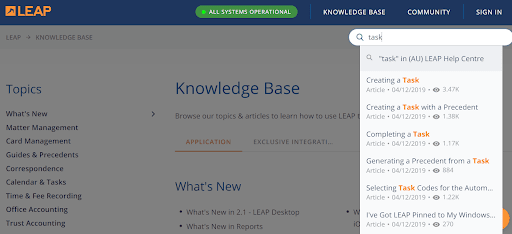
Easy Accessibility
A knowledge management system must be easily accessible and provide on-demand information so that users don’t struggle with adoption.
You need to look for a system that facilitates accessibility across various devices like phones, tablets, and laptops. This will help both your employees and customers to access everything they need on the go. A KMS with easy accessibility also allows remote teams to learn and contribute with utmost ease.
Customization Options
A powerful knowledge management system offers a wide range of customization options to help you keep the content aligned with your brand.
From adding your company’s logo, brand name and choosing your favorite font styles to picking themes that resonate well with your brand, a KMS gives you the power to tailor your knowledge base the way you want. You also get a library of themes and color schemes to pick from.
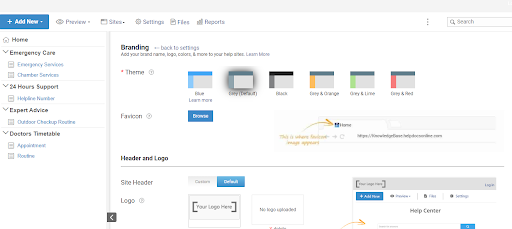
Custom Workflows
Custom workflows allow you to streamline the review process of your knowledge base posts. Such a system can have four to five statuses like Draft, Published, Ready for Review, In Progress, and Custom Status. These statuses help determine the stage of each post so that your contributors can enjoy a conflict-free documentation process.
You can use the custom workflows and approval process to ensure that all your knowledge base content is helpful, accurate, and relevant.

Smart Reports
How do you know if your KMS is performing well and successfully addressing user concerns?
That’s where reports help. Reports provide a graphical and tabular representation of all aspects of your KMS’s performance, right from failed searches and poorly rated articles to inactive or broken article links.
These comprehensive insights give a transparent picture of how adept your KMS is at solving the problems of your customers and employees. You can leverage the reports to modify your existing content or add more quality articles to your KMS.
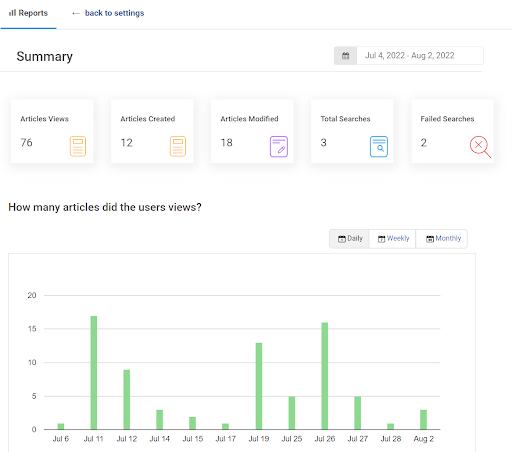
See how Frequence, a leading advertising and marketing platform, uses ProProfs Knowledge Base to set up multiple sites with custom branding for different types of clients.
“ProProfs transformed our knowledge management, boosting productivity and client service.”
Laura La Barbera, Senior Technical Writer, Frequence
Integrations
According to a 2021 study by Statista, global organizations use an average of 110 SaaS applications to run their business. This clearly shows why a knowledge management system must integrate with external tools.
Integrations are essential for maximizing the functionality of your knowledge management system by connecting it with third-party applications. A KMS with powerful third-party integrations can help users experience various other functionalities that a standalone knowledge management system cannot provide. It also creates a distraction-free experience as users don’t have to switch back and forth between tools.
How to Build a KMS
Now that we have covered the basics, it’s time to explore what goes into building a knowledge management system. You can follow these simple steps to make a compelling KMS for your employees and customers:
Identify Your Target Audience
Who are you creating a knowledge management system for?
What do you want to achieve with your KMS? Which business areas are you looking to improve with a KMS?
These are just some of the questions you must ask yourself before beginning the process.
Your aim might be to serve customers by building a knowledge base. Or, you might want an internal knowledge management system for employees to promote knowledge sharing and collaboration among teams.
Based on who your target audience is, you can decide the objectives you want to achieve with your KMS:
- Assist the support team in resolving customer issues faster
- Help the sales team make smart pitches and close deals quickly
- Aid the otherwise cumbersome process of remote employee onboarding
- Help scattered teams work coherently towards shared business goals
Capture Information From Multiple Sources
The next logical step is gathering information from every available source. Your KMS should comprise relevant content that can help users solve problems.
The question is where to look for information.
There are various ways to go about it. You can talk to department heads and managers — they can give you valuable insights on various subjects that need to be a part of your KMS. In addition to this, you can go through your support ticket system to find the most common problems faced by users.
You can also use built-in reports or Google Analytics to understand what users are searching for but not finding the answers to.
These are some of the methods that can help you capture valuable information for your knowledge management system.
Create and Structure Your Knowledge Management System
It is finally time to plunge into the content creation process. Now, there are two ways you can craft content for your KMS. First, by writing content afresh, which is quite time-consuming.
The second way is to import existing files directly to your KMS. The content present in these files gets converted into knowledge articles, saving you plenty of time and effort.
You can go for either of the two ways or adopt a mix of both – whichever works best for you.
Some of the key things to keep in mind while writing content:
- Keep the paragraphs short and simple.
- Have benefit or action-oriented headings.
- Stick to short and clear sentences.
- Do not bombard readers with a lot of information on a single page. Have some breathing space across all articles so that content is easy to consume.
- Use bullets wherever possible. They help you break down complex concepts and paragraphs into easy-to-understand points.
Once you have the content in place, start organizing it. Create a few broad categories and divide them into subcategories. Have a maximum of four to six broad sections. Ensure that each topic is covered comprehensively.
These are some best practices that you can follow when structuring your knowledge management system:
- A table of contents on the left is a good practice to keep content well organized.
- Create an FAQ section that lists down all the common or popular questions asked by your audience.
- Add images, videos, and screenshots to articles and cater to the different learning needs of your audience.
- Inter-link related and relevant articles, videos, and other resources, to make learning easy and fun (this can even boost your knowledge base’s SEO).
Gateway Mission shows us how to structure content the right way. You can visit the site to get better insight.
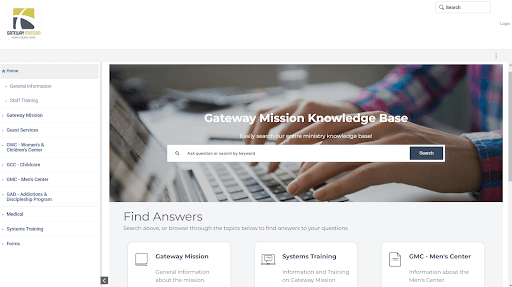
Review Your Content to Maintain Quality
You need to run a rigorous review process to maintain the quality of your content and ensure zero errors.
Ask your contributors and top reviewers to carefully go through the articles. They need to keep an eye out for tone, clarity, irrelevant information, and errors in the content. Only then can you publish your KMS.
But how do you ensure that all articles in your knowledge base are reviewed at various levels before going live?
This is where workflows come in. As we discussed in the previous section, they help your employees assign statuses like draft, in progress, ready for review, and more to streamline the review and publishing process.
There are two main benefits of using workflow rules:
- It infuses transparency in the work process as anyone can see the stage of all articles.
- It ensures that all articles are reviewed carefully before getting published.
Publishing error-free content is crucial. Whether your target audience is customers or employees, they should find the most accurate and reliable information in your KMS.

Gather Feedback & Act on It
Regardless of who your audience is, you want to know whether or not they can successfully use your KMS, right?
Having a feedback mechanism in your KMS is therefore important. It gives users the opportunity to share their suggestions on an article and escalate the issue.
Taking their feedback seriously and coming up with prompt solutions will reassure them that they are important to your organization.
There are two ways to collect feedback. First, you can ask a simple question like, “Did you find this article helpful?”
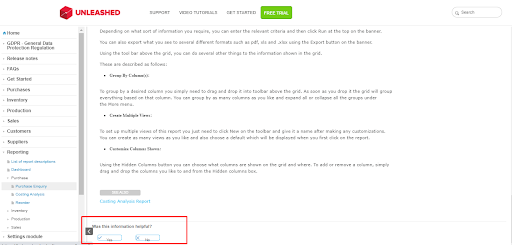
When someone clicks “No”, a comment box appears where they can add feedback.
The second way to gather feedback is via survey forms. Whatever your goal is – to measure employee satisfaction, target employees at specific points, or reduce bounce rate – survey forms can be a huge help.
You can add surveys of any kind – NPS, in-app, popup, or sidebar forms to your KMS, to gather instant feedback from users, understand their pain points, and provide a quick resolution.
This video gives complete information about how to add surveys and forms to your KMS-
Continuously Analyze and Update Your Knowledge Base
The process of knowledge management doesn’t end once your platform is up and running. To address the growing needs of employees and customers, you need to continuously analyze the content. This will help you find and address knowledge gaps, track search activities, and modify content for better performance.
But how do you know which article is performing well and which isn’t? How can you determine if users are finding your KMS helpful?
This is where reports come into play. Analyzing and updating your articles becomes a breeze if you have adopted a KMS with robust reporting capabilities.
Reports offer detailed insights into your popular articles, failed searches, broken links, and much more that help you analyze your KMS to the core. You can use the insights gained from these metrics to make timely updates to your knowledge base and improve content quality.
Tracking KMS performance and adding new articles to it shows your proactive approach to maintaining KMS. It is, undoubtedly, a challenging task, but if executed properly, it can reward you with – customer/employee happiness, a reduction in internal or external support tickets, streamlined work processes, and much more.
Watch this video to learn more about these metrics and how you can analyze them –
Knowledge Management System Examples
Looking for examples of knowledge management systems here are three options:
RMS
RMS Help Center is a great example of a knowledge management system for customers. It is comprehensive, well-structured, and searchable. There is a home page with broad categories comprising topics on online services, property management, rates, reports, setup, and troubleshooting.
The header displays a section called “All Topics,” which opens the table of contents for all their knowledge base articles. As you click on each category, you will find multiple subcategories, with each category providing detailed information on a specific topic. Every topic is clearly explained using images and videos. At the end of each article, there is also a feedback question – “‘Was this article helpful?”’
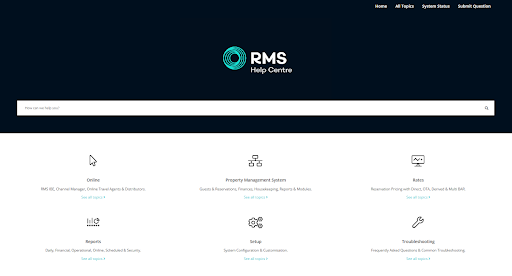
Manage Engine
Zoho-owned ManageEngine’s software manual is another great example of a knowledge management system. This KMS is built for customers.
What is unique about this KMS is its clean structure – a table of contents on the left, with sections and subsections, clearly defined. As you click on each category, you will find quite a lot of information presented beautifully on the right-hand side.
One of the interesting aspects of this manual is the chat section at the bottom right. It provides users with quick access to chat support for additional help.
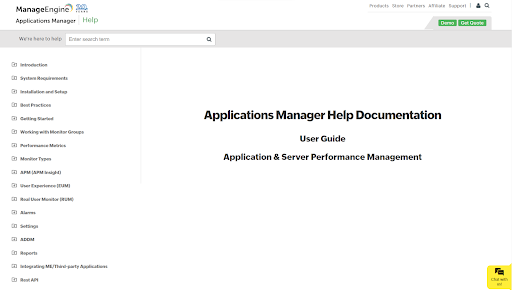
Microsoft’s Help Center
Microsoft’s customer-facing help center is Goals. It is brilliantly designed, and meticulously structured, and offers everything you need to have a smooth experience with Microsoft’s products.
Its KMS is quite exhaustive, with trending topics across categories mentioned right at the top. You will find a section containing learning and training material links as you scroll down. Towards the bottom of the page, you will find more links for additional support.
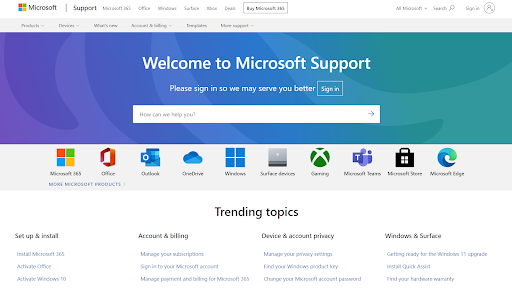
You can create similar knowledge management systems for employees too. It can help you encourage team collaboration, improve employee onboarding, and promote a culture of knowledge sharing in the workplace. All of these benefits were discussed in detail in the previous section.
Drive Your Business Successfully With a Knowledge Management System
Whether you are looking to create an internal knowledge base or an external one – both offer unique benefits and can take your business on the path to progress.
Both KMS types have one thing in common – they capture, store, and manage business information that your employees or customers can utilize for problem-solving.
Building an excellent knowledge management system that delights your audience at every step and gives you a competitive edge starts with a few basic things. Start by identifying your target audience and capturing all the relevant information. Once you have the information ready, structure it logically so that it’s easy to navigate. You should also regularly review and analyze the articles to ensure they stay relevant for your audience.
Lastly, you must choose the right knowledge base software solution that has the necessary features to help you build a comprehensive, well-structured knowledge platform for your users.
FREE. All Features. FOREVER!
Try our Forever FREE account with all premium features!







